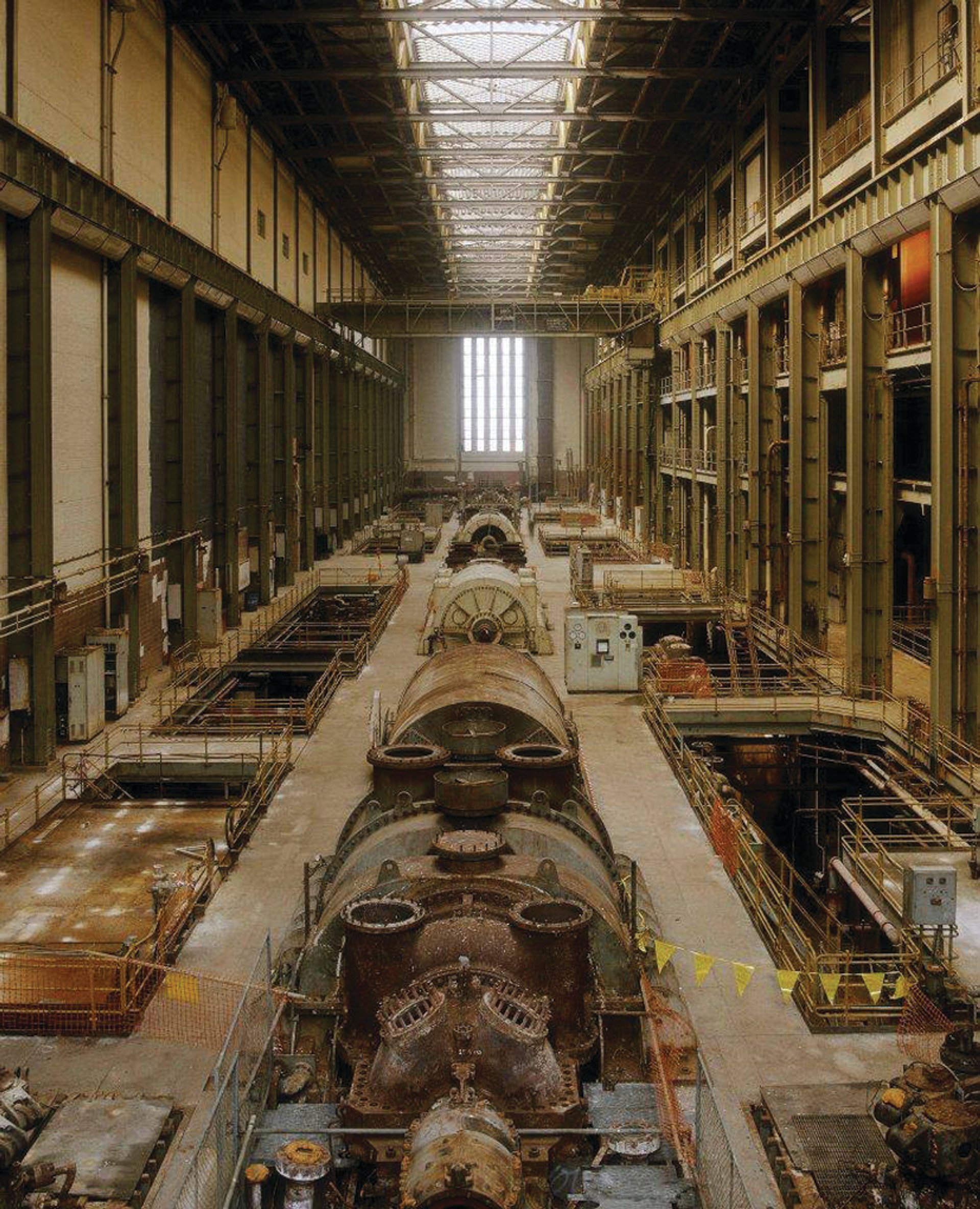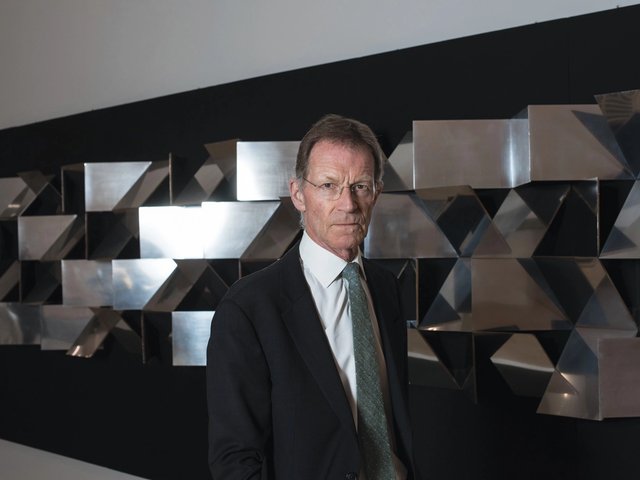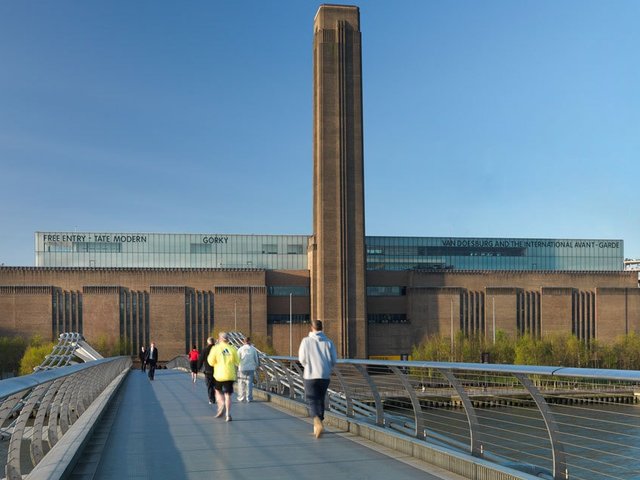Which are the three most important museums of Modern and contemporary art in the world? The Pompidou in Paris, the city that defined art until the Second World War. MoMA in New York, the city of the post-war period. And Tate Modern in London, the city that may never have defined art, but is about to rip up the classic “two-city” narrative of the Modernist canon for good.
The seeds were sown a long time ago. The much-maligned 2001 Century City show—art from Paris, Vienna, Moscow, Rio, New York, Lagos, Tokyo, London and Mumbai—now looks prescient. Nicholas Serota, the director of the Tate, said in 1999 that the museum’s challenge would be to collect a much more diverse range of art. Steadily, in the intervening years since that statement, the Tate has begun to introduce a wider 20th- and 21st-century history of art: more work by women, by Black and Asian artists, by artists based in Latin America, Russia, China and Africa. And now, with the opening of Tate Modern’s extension, Serota will have a museum to house that collection properly.
Serota, quite clearly, knows how to play the long game. He is that rare combination: someone with big ideas as well as the attention to detail to carry them through. In 1988 he famously applied for the director’s job at what many call the “old” Tate at Millbank—the 1897 porticoed building that is now Tate Britain—with a two-sided sheet of A4 entitled Grasping the Nettle. Among the nettles to be grasped was the need, he believed, for a completely new museum devoted to Modern and contemporary art: one that commanded the respect, not just the affection, of living artists.
What the Tate trustees didn’t know was that he was, even then, aware that any new museum would one day expand. A month before that expansion—the £260m Herzog & de Meuron, brick-clad ziggurat that abuts the original Tate Modern—opens to the public, Serota found time to talk to The Art Newspaper.
“I had a strong conviction [in 1988] that London needed a museum of Modern art,” he recalls. “[The] Tate was struggling to discharge its responsibilities to British art and to international Modern art in a building that was much too small.” There was already a plan to build a series of pavilions at Millbank, “but we did an analysis pretty early on and we realised that there wasn’t going to be enough space to do justice to the international Modern collection and the collection of British art”. That “we” is telling. Serota, if his memory is correct, already knew. It just needed time for everyone, apparently independently, to come to the same conclusion.
One of the great advantages of Bankside was that it seemed that there would be room to develop in future
By 1992 the trustees were persuaded and two years late, the £134m project to transform Giles Gilbert Scott’s disused 1947-63 Bankside Power Station into Tate Modern began. Even then, Serota was careful to present the site (the Hungerford car park in Waterloo, and sites in King’s Cross, Vauxhall and Docklands were also considered) in the best possible light. To avoid any risk of the trustees doubting the semi-industrial wasteland that was 1990s Bankside, Serota told the New Yorker in 2012 that he made sure that they first saw the power station from the safety of the north bank and St Paul’s Cathedral, looking directly across the river to what were once Southwark’s Medieval alleys.
“One of the great advantages of Bankside was that it seemed that there would be room to develop in future,” Serota says. “Most museums of Modern art grow, because they need to acquire and show new art.” The idea, he says, was for an expansion in 2025 or thereabouts. But that was superseded by the surprise reality of five million visitors in a building intended for two million. London was also changing: inward investment and a new tube station helped rebrand Bankside. Multimillion-pound property developments began to encircle the power station (ironically displacing studio space in the vicinity). “The developments around us, which began as a consequence of us, made us realise that once Tate Modern opened we could very quickly be surrounded by neighbours who could have objected to us growing.” There was, Serota suggests, little time to lose—and many to persuade. They included trustees, government, donors—who asked, why the rush?—and staff who wanted the focus to be on the collection, or reinvigorating Tate Britain.
Meanwhile, art itself was changing. The slow stream of artists producing installation, performance, photography, film and video, and even some digital media work in the 1990s had, by the mid-2000s, become a flood. “We quickly got to the point where we wanted to show a wider range of art. We wanted to show photography. We had taken on a wider range of responsibilities than we had thought we had before 2000,” Serota says.
Under Frances Morris, appointed director of Tate Modern in January, the acquisition committees and collection have been growing in parallel. It’s a big improvement from the 1990s, when the Tate missed out on major works such as Rachel Whiteread’s elegiac Ghost (the plaster cast of an interior of a room in Archway, north London) thanks to the actions of faster-moving collectors such as Charles Saatchi (the work is now in the National Gallery of Art, Washington DC).
It is an interpretation of a collection in 2016, a collection that will continue to grow. We will pull things out. We will re-examine and rethink.
Among the changes visitors will see this month are “the acquisition of time-based media and installations from the late 1960s and early 1970s to the present day”, Serota says. He cites work by Nam June Paik as an example of the historical acquisitions. “There is also a much higher incidence of us showing work by women, a much broader geographical spread and much more photography. These are big changes compared with Tate Modern 2000.”
Serota acknowledges that not everyone is going to like it. “We’ve been buying a great deal of art that doesn’t really have a place in the international scene, and as I was trying to explain to a group of our American collectors, when they come to Tate Modern in June they are going to see a lot of art with which they are unfamiliar. I know that someone is going to say: ‘I know you have a great group of Ellsworth Kellys—they were on show last year. Why’s that room now filled with Sheela Gowda? Kelly is a much more important artist.’”
Serota says that he was with the influential American Modernist just before his death last December and “cares passionately” about Kelly’s work (indeed, a major show opens at Tate Liverpool next year). “But,” he adds, “some of the American greats have gone into store; some of the British greats have gone into store; some of the international greats have gone into store. There is no sense in which the display you will see when we open on 16 June is everything that is best in the Tate. It is an interpretation of a collection in 2016, a collection that will continue to grow. We will pull things out. We will re-examine and rethink.”
Another big change is the appointment of Tate Modern’s first female director—and at the museum with the most prestige (the other incumbents are Alex Farquharson at Tate Britain and Francesco Manacorda at Tate Liverpool, Tate St Ives’ directorship is vacant). Frances Morris, who has worked at the Tate since 1988, follows a series of jet-setting European men—three since 2000. (Morris told us last month that she “would not be doing the lecture circuit”.)
Serota says that Morris was chosen because she was, simply, the best candidate: “She has been building the international collection since 2000. She brings a deep knowledge of the collection and is a brilliant maker of exhibitions.” He singles out the monographic shows of Louise Bourgeois (2007-08), Yayoi Kusama (2012) and Agnes Martin (2015), as well as major surveys such as Arte Povera (2001), Paris Post War (1993) and Rites of Passage (1995). “I think her appointment has been characterised by some, not unfairly, as Tate growing to the point where it has sufficient confidence in its own voice not to feel we have to bring in someone from abroad to teach us things.”
Morris, meanwhile, is similarly flattering about her boss, telling the Guardian in April that she “very much hopes he stays around…because the opening is just the beginning”. Yet the expectation had generally been that, once fundraising was completed (there is a still a difficult £30m to go), Serota would start thinking about his future.
While he is always on his guard (tricky questions are greeted with a long pause and an almost perfectly punctuated, thought-out paragraph in reply), he becomes evasive when asked if he will stay on. “I always listen carefully to what Frances says,” he says, and laughs. But then he relents. “I’ve got a responsibility to see this project through. We’ll go to the opening and we’ll see what happens afterwards. I have to raise the money [to complete the extension] and I have to say to government, foundations, trusts, individuals to keep giving us money. At the same time I have a lot of experience. I need to share that with my directors.” All of whom are relatively new in post.
It is easy to caricature Serota as a politician and fundraiser but, as he says rather modestly, “occasionally I have curated exhibitions” (most recently Matisse: the Cut-Outs). He adds that he has some “ideas up his sleeve”. Anything he could reveal? No, he says, as the conversation draws to a close, not yet. In fact, he is on the way to an exhibitions meeting next, where the subject might well come up. Surely they can’t turn his proposals down?
“Oh, you wouldn’t believe what they might say,” he responds, semi-seriously. “They may very well feel my suggestions are not to the necessary standard.” And on that, the director who may be defining the 21st-century museum heads off to start, so he claims, yet more persuading. ☐
The Tate under Nicholas Serota: 1988 to the present
1988: Nicholas Serota presents Grasping the Nettle, a seven-year plan for the Tate, as part of his application to succeed Alan Bowness as director. Other candidates include Norman Rosenthal and Julian Spalding. Tate Liverpool, conceived in the early 1980s, opens in May. Serota starts in post in September.
1991: The Turner Prize, started in 1984, is revamped with an age limit of 50 to stop it turning into a “lifetime achievement award”. The first new-style shortlist features Ian Davenport, Rachel Whiteread, Fiona Rae and the eventual winner Anish Kapoor. A now-familiar pattern of controversy and popularity ensues.
1993: Tate St Ives opens: the Tate had already announced its presence in the Cornish town when taking over the management of the Barbara Hepworth Museum and Sculpture Garden in 1980. Tate St Ives is currently closed for a major renovation, reopening in 2017.
1994: The Tate trustees announce Bankside Power Station in Southwark as the site for a dedicated Tate Gallery for Modern and contemporary art. Swiss architectural firm Herzog & de Meuron wins the international competition for the £134m project a year later.
2000: Tate Modern opens. Despite its controversial thematic hang, visitors flock in, quickly reaching more than five million, after initial expectations of two million. Its first director is Lars Nittve, appointed in 1998. He is succeeded by Vicente Todolí (director between 2002 and 2010). Stephen Deuchar is the first director of the rebranded Tate Gallery on Millbank—Tate Britain—and stays until 2009. The first (and sadly missed) Tate Triennial devoted to British art (called Intelligence) opens at Tate Britain in 2000; the last is Nicolas Bourriaud’s infuriating but influential Altermodern (2009).
2001: Century City, featuring art from nine different cities and periods, curated by a team under Iwona Blazwick, divides the critics but sets out a future direction for Tate Modern. “We are not a museum that equates internationalism with the Nato alliance,” Lars Nittve tells Art Journal. Tate Britain unveils its Centenary Development.

2003: Olafur Eliasson’s Weather Project wows the crowds in the Turbine Hall and sets a new standard for visitor engagement and interaction. (See pp12-13 for more Turbine Hall commissions.)
2004: Serota curates Donald Judd at Tate Modern. Other Serota-led shows will follow, including Cy Twombly: Cycles and Seasons (2008) and Henri Matisse: the Cut-Outs (2014).
2007: Hélio Oiticica: the Body of Colour marks an early major exhibition given to an artist outside the North American/Western European canon. By 2013, non-Western artists are dominant, with shows of Mira Schendel, Meschac Gaba, Ibrahim El-Salahi and Saloua Raouda Choucair.
2008: British art dealer Anthony d’Offay gives his collection of 50 installations—Artist Rooms—including groups by Georg Baselitz, Agnes Martin and Louise Bourgeois—jointly to the Tate and National Galleries of Scotland. They pay d’Offay the £26.5m the works—then valued at £125m—cost him to amass. The installations tour the UK, and the collection continues to grow: a permanent space is dedicated to it in the new Tate Modern extension.
2012: Temporary opening of the Tanks (underneath the new extension), a raw industrial space used to showcase performance, installation and film, from grandees such as Anne Teresa De Keersmaeker to up-and-coming artists such as Eddie Peake.
2013: Tate Britain reveals its £45m renovation by architects Caruso St John and a rehang of the permanent collection. The director during this period is Penelope Curtis, appointed in 2010, who leaves in 2015. She is succeeded by Alex Farquharson.
2016: Tate Modern’s much-anticipated £260m extension with three floors of new galleries as well as the Tanks, opens to the public. It allows the museum to expand the kinds of art on show, in a far more international story of Modern and contemporary art. Between 2010 and 2016 Chris Dercon is Tate Modern’s director. In April 2016 Frances Morris succeeds him.




